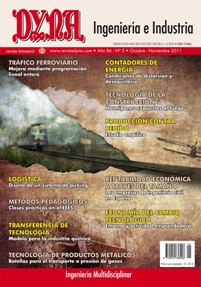FIRM SIZE AS A MEASURE OF ECONOMIC PROFITABILITY. CIVIL ENGINEERING COMPANIES IN SPAIN
Keywords:
Rentabilidad económica, tamaño organizativo, ingeniería civil, análisis de balances, ratios económico-financieros.Abstract
The profit and loss account shows the difference between incomes and expenses of a company during a financial year. However, the net income, as an absolute figure does not allow identifying the organizational efficiency or the efficiency in the use of resources. This explains the usefulness of economic profitability, among other indicators, to analyse efficiency. In this research, based on the analyses of the Spanish civil engineering sector, we have determined three ways to calculate the economic profitability, considering the operating income and three indicators of firm size. These indicators, proposed by the Spanish Accounting Plan as criteria to measure the size of the company, are the total amount of assets, the average number of employees in the financial year and the revenues from operations. The main objective of this work is two-fold. On one hand, we seek to group Spanish civil engineering firms in terms of their economic profitability. On the other hand, we try to determine the firm size indicators that characterize each group. Our findings show three groups of civil engineering firms in Spain, called star group, advance group and standard group. For each one of these categories, it has been determined which is the relationship between the different measures of economic profitability and the group assigned. The results show that the companies of the star group have a positive relationship with revenue from operations; companies of the advance group have a high return with regard to assets and a low number of employees; whereas the standard companies are been positively influenced by the number of employees and negatively by revenue from operations and assets.Downloads
Published
2011-09-28
Issue
Section
ARTICULOS

